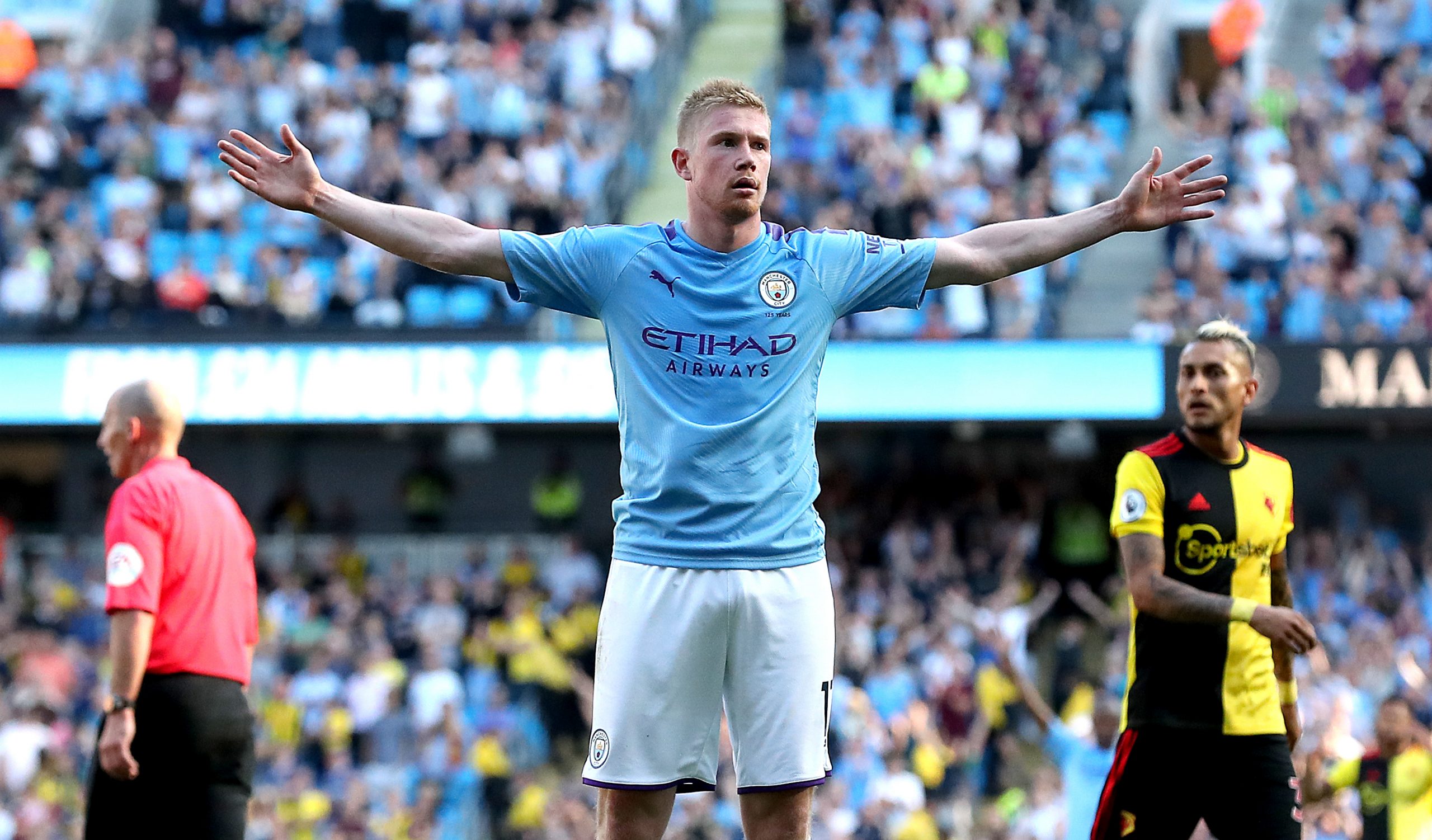Pep Guardiola has a way of creating attacking patterns that are easy to predict, but almost impossible to stop.
At all his clubs Guardiola has devised schemes in the final third that his teams keep repeating, and that keep coming off. At Barcelona, especially in the early days, Lionel Messi would keep dragging the left-back inside and leave space for Dani Alves to attack, often set up by a floating Xavi diagonal pass. At Bayern Munich, Guardiola moved full-backs Philipp Lahm and David Alaba inside to control the game. These moves accentuated the qualities of the key players, created numerical overloads in crucial areas and enabled Guardiola to move his best players into the centre. At Manchester City the Catalan has achieved the same by using Kevin De Bruyne as a central midfielder.
By now the two have worked together for three years, and so most know how De Bruyne moves, yet he seems more dangerous than ever. In six league games he has scored two goals and notched seven assists. Few will be surprised to see him top the Premier League list for open-play key passes and passes into the box per 90 minutes, but his expected assists rate from open play is striking even by his standards: his average is 0.73. The next on the list in the league is Mahrez, with 0.44. The radar below fails to do De Bruyne justice: the scale of his creativity is literally off the charts.
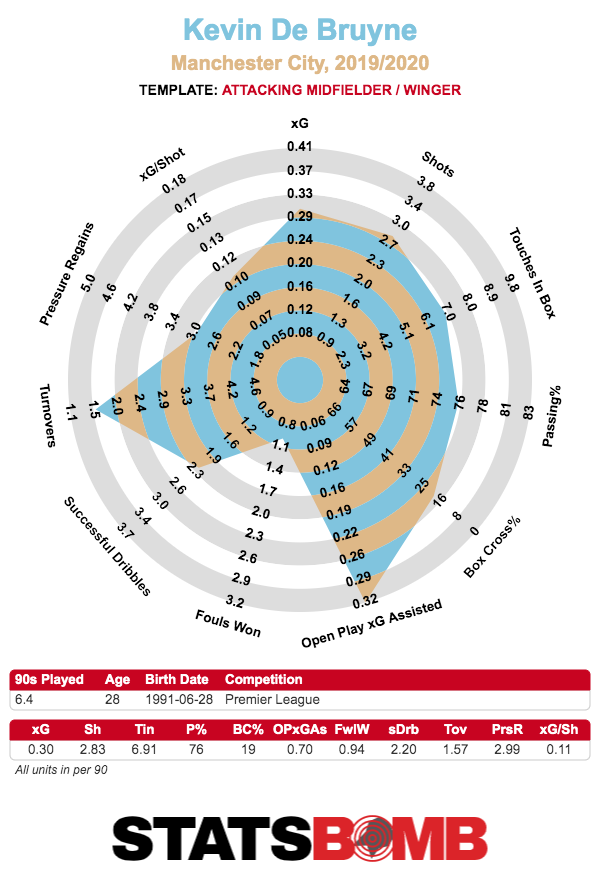
Part of what makes De Bruyne hard to stop is that Guardiola has put a player with such extreme attacking qualities in a conservative staring position. Most teams facing City will ask a central midfielder to track De Bruyne. When De Bruyne then moves out wide, it takes an unusually alert and rapid player to track him, and it’s likely to mean trouble for most players not named N’Golo Kanté. Even if the central midfielder does track De Bruyne, the rest of the team can be dragged out shape. On Saturday the way in which De Bruyne drifted out wide was representative of his movement so far this season.
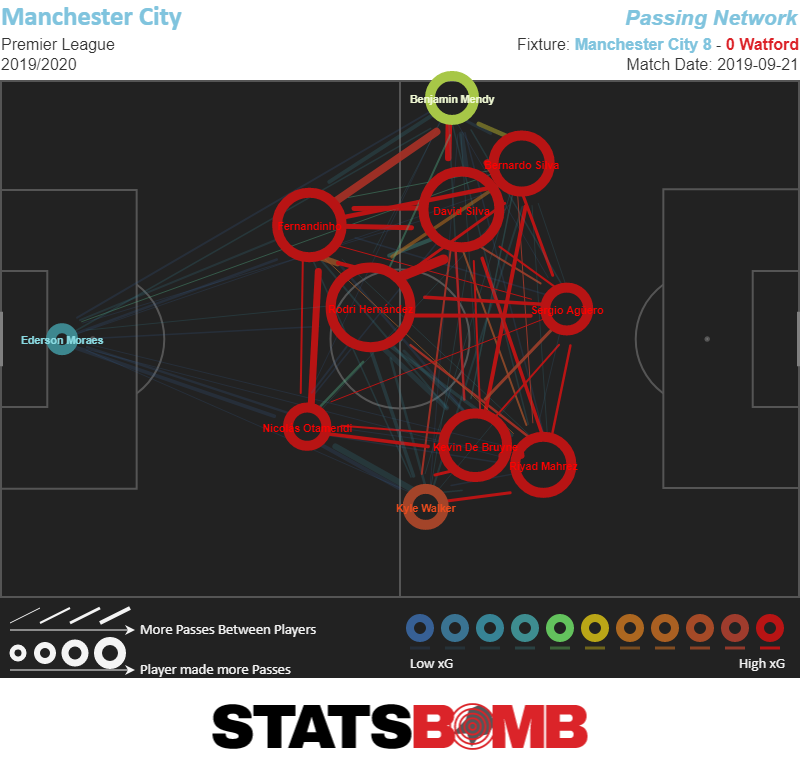
The graphic shows the tactical harmony with which Guardiola has set up his team. City tend to move slightly towards the left, because they build more of their attacks down that side: last season Oleksandr Zinchenko averaged 92.4 passes per 90, Kyle Walker 77.4. Some reasons might be that Aymeric Laporte, the most gifted centre back, plays on that side, and that David Silva is a master at linking up in small spaces, as opposed to De Bruyne, whose longer legs need more space. Look closely at the map above and you see that Rodri sends the ball far more often to Silva than to De Bruyne. The same happened the previous game in which De Bruyne started, at home to Brighton, even though he played in an unusually central role here. In total Rodri has sent 38 passes to Silva and 24 to De Bruyne this season.
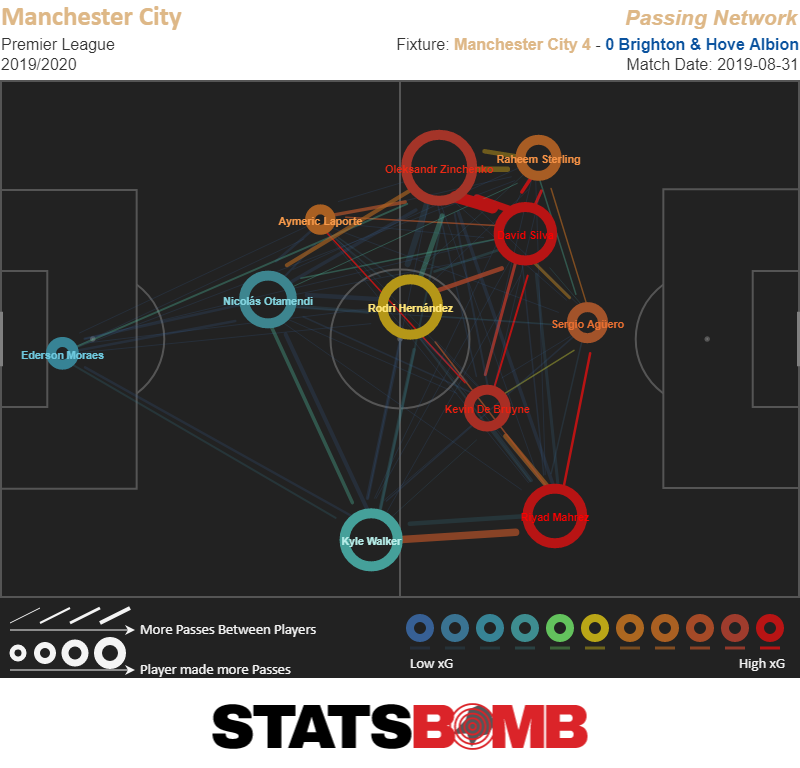
Thus, it will surprise nobody that Silva has played more passes per 90 this season (69.2) than De Bruyne (56.3). Not only does it exploit Silva’s nimble feet and clever movement in small spaces, but it opens up more space for De Bruyne once the ball is shifted to the right. The trigger will often be a diagonal pass, and before the opposition have managed to move their team across, De Bruyne will have made a run or a decisive cross.
Meanwhile Silva will join the striker and the left winger in moving into the centre, anticipating the delivery from wide, which is part of the reason why Silva has nearly twice as many touches in the box per 90 (11.96) as De Bruyne (6.11). On Saturday all these factors came together in the opening goal: City started the attack on the left, then switched the ball over to De Bruyne, who swung in a cross for Silva who scored from close range.

Whenever the ball reaches De Bruyne on the right, City tend to follow a small number of specific patterns. One is the deep cross, as with Silva’s goal. If the precision of these crosses is astonishing, the timing of the runs is too. There was another big chance in the first half against Watford that came when Fernandinho floated a diagonal pass to Bernardo Silva, who was making a rare appearance on the right. As the ball traveled towards Bernardo, De Bruyne was already positioning himself in order to receive the support pass.
At the very moment that Bernardo sent the ball back to De Bruyne, on the edge of the box, Sergio Agüero darted towards the far post, certain that De Bruyne would 1) whip the ball in first time and 2) place it right on his head. Of course De Bruyne did so, and Agüero should have scored with his close-range header. Though Watford had three defenders well-positioned in the box, the speed and timing of the move made it difficult for any of them to track Agüero.
Earlier this season, when City drew 2-2 at home against Tottenham, City scored with this move, only with Sterling popping up at the far post instead of Agüero. The rest was identical: City move the ball from the left to the right, Bernardo then passed it back to De Bruyne, who swung in a cross from the edge of the box towards the far post.
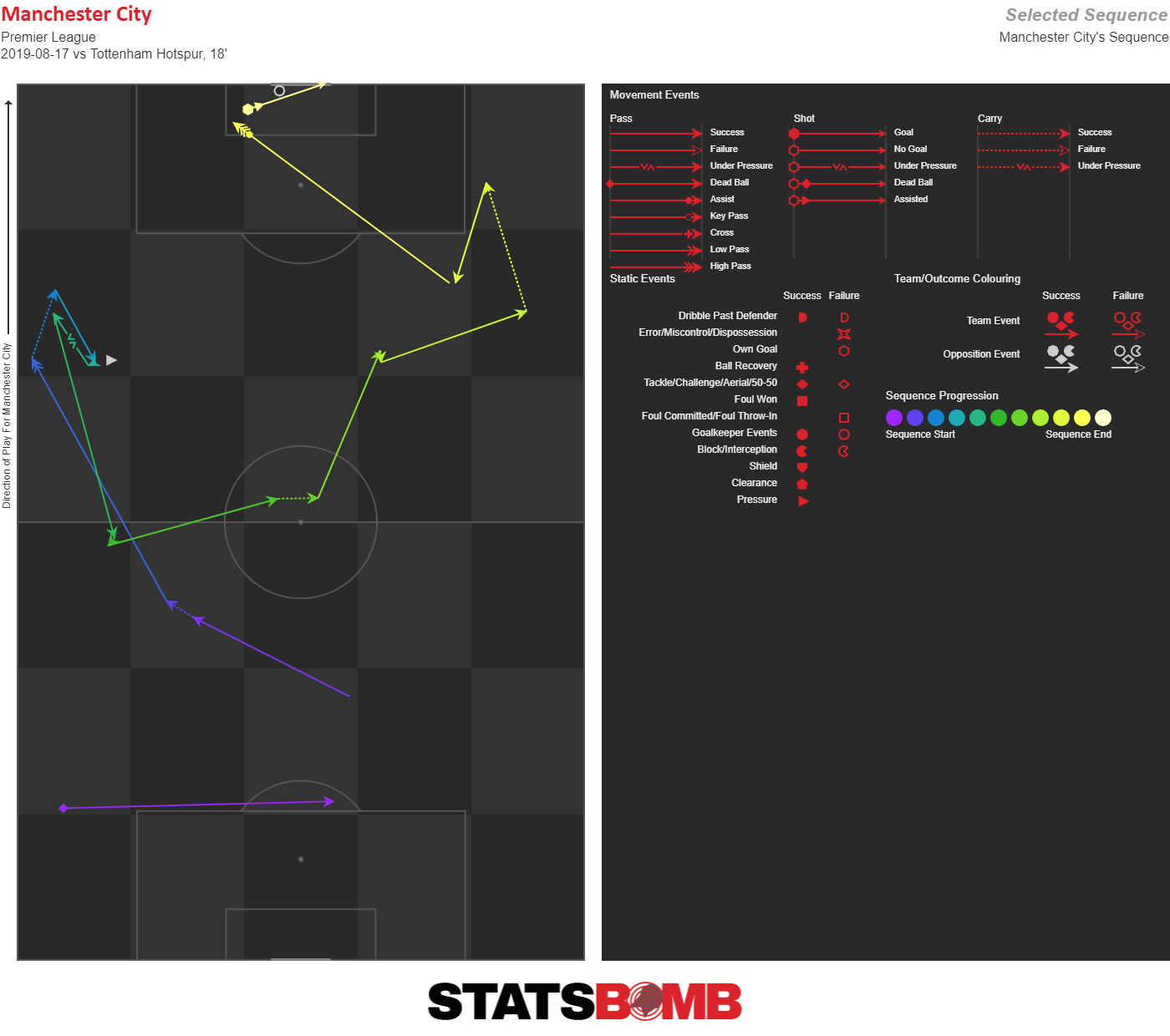
These moves are not only hard to stop because City can pull them off blindfolded; they also originate from areas that would otherwise be fairly harmless. Against most teams the alarm bells are hardly ringing if a midfielder has the ball out wide on 30 yards, yet with De Bruyne this is lethal, and City keep exploiting it. His passing sonar shows how direct his distribution is outside the box.
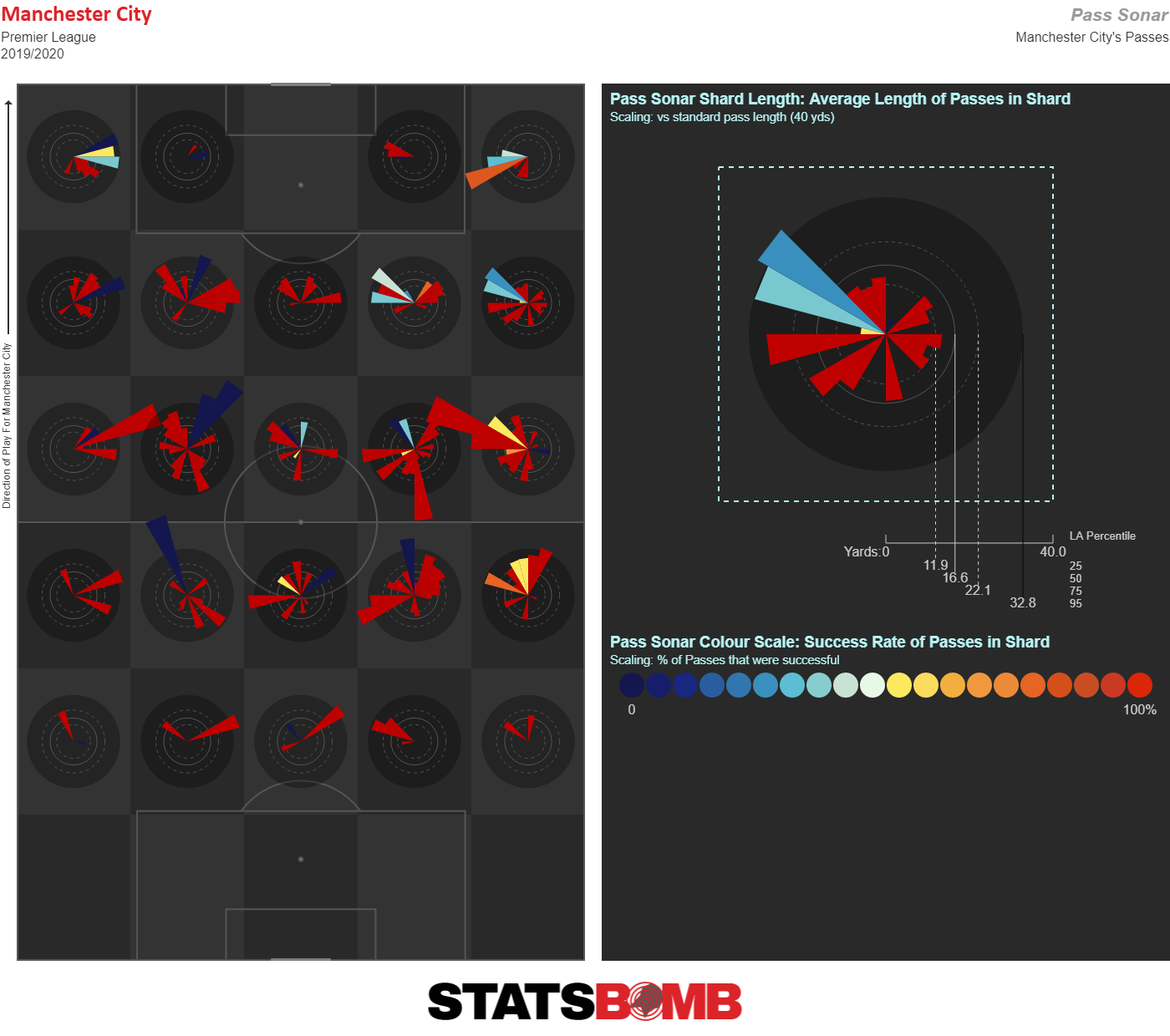
Beyond the deep cross De Bruyne also makes runs in behind the defence, such as when he assisted Bernardo in the second half on Saturday. Again this is a well-rehearsed move, and there are plenty of other examples. Typically the right winger will get the ball by the touchline, then find De Bruyne, who has moved in behind the left-back too quickly for any central midfielders to follow him. Since both Bernardo and Mahrez are left-footed, they can make this pass to De Bruyne with ease.
On Saturday it was Mahrez who played this pass, enabling De Bruyne to fire a low cross towards the far post. Here Raheem Sterling tends to produce a tap-in. That the player who appeared in this zone on Saturday was his direct replacement, Bernardo, shows how deeply Guardiola has drilled these patterns into the team. So how do you stop De Bruyne? There are few obvious answers. You can try to press high and shut off the supply, but good luck doing that against City. If you want to sit deep and keep the lines close together, you need centre backs who can deal with the deep crosses. Perhaps the best way is to use a back three, so that the left-sided centre-back can pick up De Bruyne’s runs.
Coincidentally or not, the only coach who has beaten Guardiola’s City in a league game at the Etihad in which De Bruyne has started is Antonio Conte, who set Chelsea up in a 5-4-1. In any case, Conte is gone and De Bruyne looks certain to be a menacing presence throughout the season. That City’s rivals know what’s coming is unlikely to be of much consolation.
Header image courtesy of the Press Association
